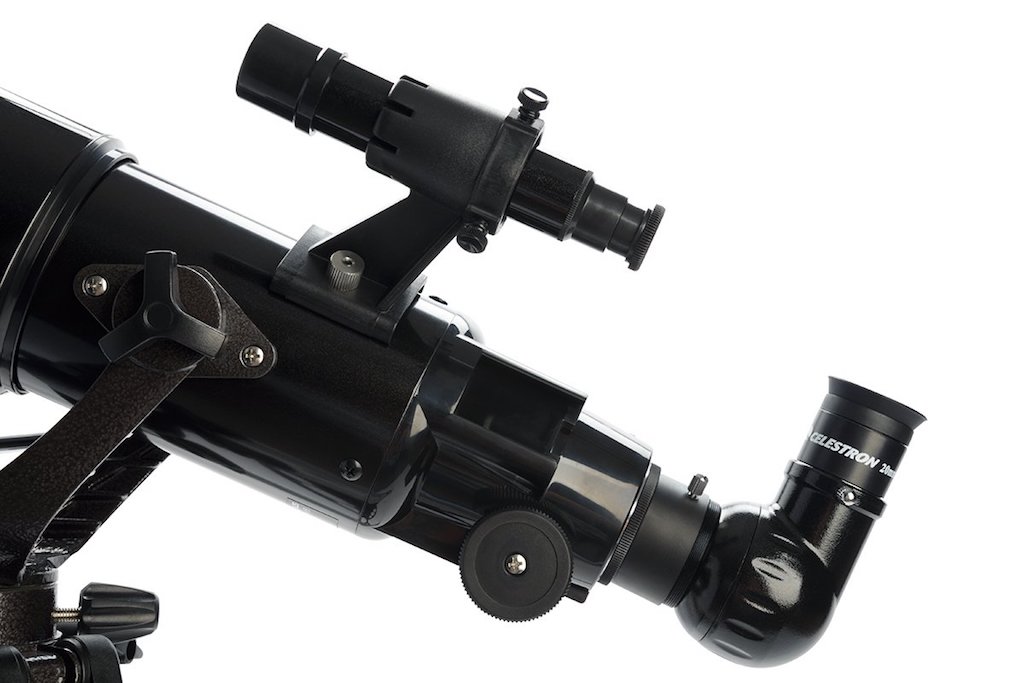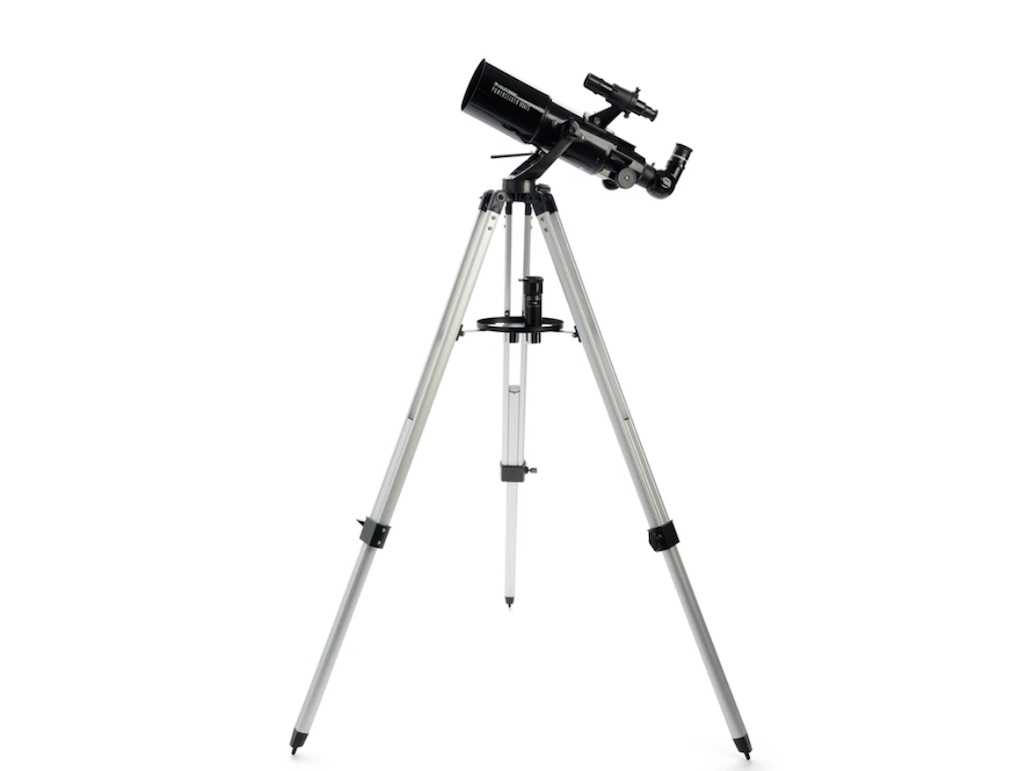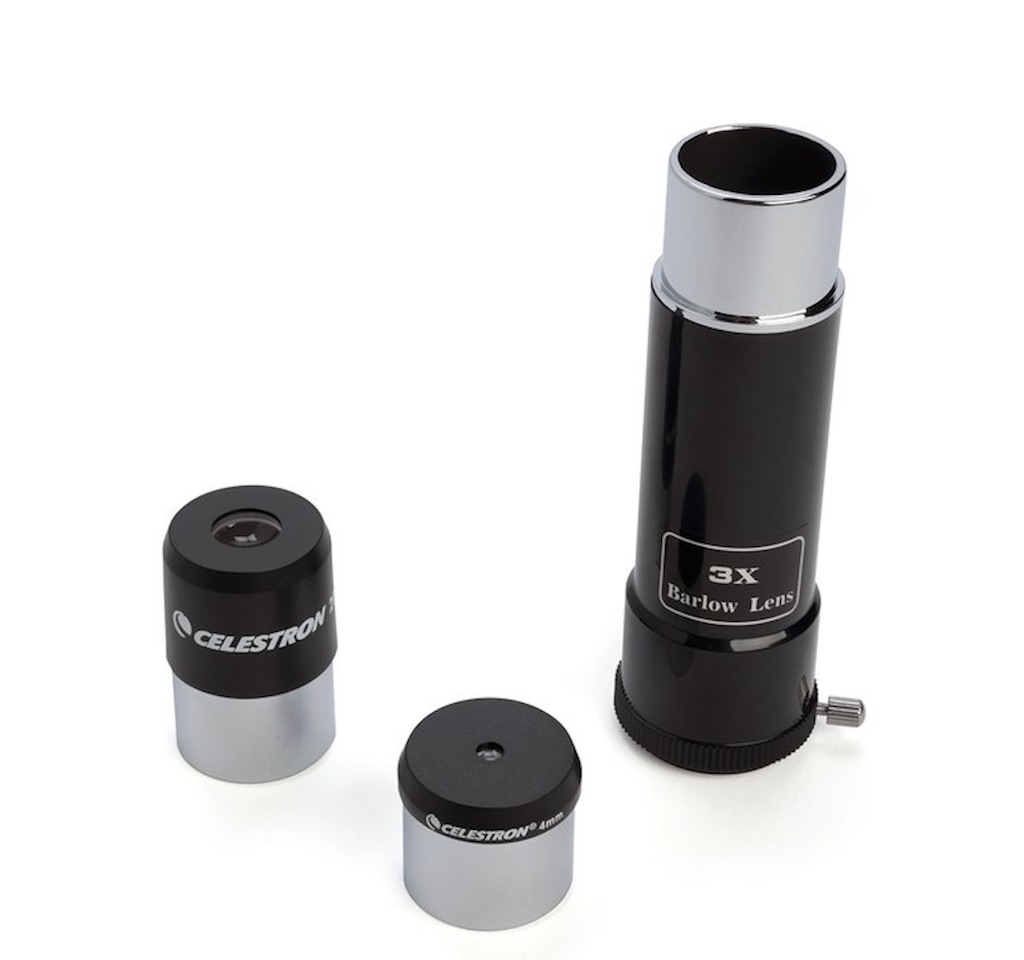Space Verdict
If you're a casual skywatcher, looking to enjoy the night sky without having to invest a large amount of money in a telescope, then the PowerSeeker 80AZS is worth considering. The optical assembly comes with everything required for a successful night of observations, but we do recommend avoiding the use of the supplied Barlow lens — the optics are unable to cope with the large increase in magnification. We opt for furnishing this refractor with further eyepieces, while being respectful of its 189x and 11x limits. Slight optical defects are evident but don't ruin views. The overall design is fair for the low cost, with the plastic features that are often expected with beginner telescopes.
Pros
- +
Good optics with little distortion
- +
Simple to set up and use
- +
Good views at a low budget
- +
Lightweight for good portability
Cons
- -
Tripod is prone to shaking
- -
Optical system struggles with large magnification increases
Why you can trust Space.com
The Celestron PowerSeeker 80AZS is a "grab and go" telescope that's built for celestial and terrestrial views. Given its total weight of 10 lbs. (4.54 kilograms), it's also exceedingly lightweight, making it suitable for beginners and families.
With an aperture of 3.15 inches and a focal length of 15.75 inches, the PowerSeeker 80AZS offers views of targets that are sure to be on the observing list of many skywatchers: the planets, moon, bright nebulas and galaxies.
What's more, the telescope comes with a variety of accessories that make starting out in skywatching all of the more simple: 20 mm and 4 mm Plössl eyepieces, 3x Barlow lens, accessory tray, an erect-image star diagonal, 5x24 finderscope and an easy-to-use alt-azimuth mount. Celestron's Starry Night Special Edition software is also included.
Related: Best telescopes: Top picks for beginners, viewing planets, astrophotography and all-arounders
Optical design: Refractor
Aperture: 3.15" (80 mm)
Focal length: 15.75" (400 mm)
Focal ratio: f/5
Eyepiece 1 focal length: 20 mm (20x)
Eyepiece 2 focal length: 4 mm (100x)
Total kit weight: 10 lbs. (4.54 kg)
Mount type: Alt-azimuth
Celestron PowerSeeker 80AZS: Design
- Simple build — no tools required
- Portable design
- Low-quality plastic accessories
- Tripod requires extra care
While many manufacturers offer computerized telescopes or more complicated instruments that require nuts, bolts and tools to put them together, it is very refreshing to discover that we were able to assemble the PowerSeeker 80AZS in less than ten minutes.
We didn’t need to use the supplied instructions — which are very comprehensive we might add — since setting up is so intuitive. There is no need for an Allen wrench, screwdriver or any other kinds of tools and it’s easy to fit the optical tube to the mount and tripod. Additional fixtures, such as the finderscope, are also simple to attach.
On inspecting the telescope once it was assembled, the build is fair for the price. As you would expect with many budget telescopes, the PowerSeeker 80AZS' focusers are made of plastic, as is the 90-degree diagonal. While this isn’t a massive drawback, there are budget telescopes in a similar price range with higher quality accessories.
Breaking space news, the latest updates on rocket launches, skywatching events and more!
The refractor requires extra care during observations: it is not as robust compared to other budget telescopes we have used — in particular, the tripod shakes and threatens to topple over when nudged. On a positive note the altitude-locking bar, used for keeping the setup in place, performed very well, while the slow-motion rod control allows for accurate slewing.
In our experience, Celestron has always offered high-quality views of a multitude of night sky targets, so we had high hopes for the PowerSeeker 80AZS' optics, particularly because they are multi-coated.
The refractor has a focal ratio of f/5, which allows wide-angle objects such as open clusters to fit in the field of view. A variety of different targets are within reach of its optical limits, provided the skywatcher is respectful of the highest and lowest useful magnifications: 189x and 11x. With the two supplied Plössl eyepieces, the telescope is able to achieve magnifications of 20x and 100x, while the 3x Barlow lens pushes the optical system further by three times.





Celestron PowerSeeker 80AZS: First light and functionality
- Good optics with slight distortion
- Tripod is prone to shaking
- Pleasing views for a budget telescope
- Easy-to-navigate mount
Keeping the price of this telescope in mind, the PowerSeeker 80AZS' optics are very good for the money. Initially — and due to the telescope employing an erect image diagonal — we were concerned that there would be a degree of light being scattered. Yet, given the telescope’s low power and rich field, we didn’t find this to be a particular problem.
With the last quarter moon in the sky, we took the opportunity to view its craters, which were beautifully picked out by the terminator; the point where lunar night meets lunar day.
Related: Moon phases
In particular, the phase allowed us to pick out stunning sights of Herschel, Archimedes, Clavius and Copernicus in our field of view — the PowerSeeker 80AZS offered bright, clear sights despite atmospheric distortion. Sadly, we did notice a degree of false color but this didn’t ruin the experience — we're certain that beginners will be pleased with the optical system's performance.
Given the low magnification offered by the 20 mm Plössl, the moon doesn't fill the field of view and we were able to take in the entire lunar surface. There's a positive to this — beginners won't get lost navigating craters and mare. Upping the magnification with the 4 mm eyepiece, the field of view still remained sharp as we were brought closer to the rugged terrain.
The 3x Barlow lens triples the telescope's power — an impressive feat that sadly caused blurred sights: evidence that the optical system has been pushed way beyond its useful magnification. We recommend accessorizing with a variety of eyepieces and filters in order to be respectful of the 189x and 11x limits.
The 5x24 finderscope is a satisfactory addition to the PowerSeeker 80AZS in assisting with our navigation of the moon's surface. Often, optical finders struggle to pick out faint stars for star-hopping from light-polluted areas but when we put this to the test, we didn't feel this to be a problem for the 5x24 — stars slightly below the threshold for naked-eye observation (magnitude +6) are picked out clearly by the optics.
To make navigating the night sky even more simple, we recommend purchasing a red dot finder for conditions where picking out faint stars is a challenge. The PowerSeeker 80AZS offers a thread for easy attachment to the optical tube.

Swinging the telescope up and down and left to right, the alt-azimuth mount is a breeze to move, with no catching or sticking. We did note an obvious degree of shaking when slewing from one target to the next, forcing us to hold the tripod firmly for extra stability.
Given the telescope's wide objective lens, the optical system is capable of picking up star clusters in one single view: the Pleiades (Messier 45) in Taurus (the Bull), with its magnitude of +1.6, is a particularly stunning sight through the PowerSeeker 80AZS. The seven major stellar members are pin-sharp with no internal reflections in the optics and, with a degree of averted vision, the cluster's Merope Nebula (NGC 1435) is easy to pick out as a white, ghostly haze.
Slewing over to Ursa Major (the Great Bear), we quickly and easily split the double stars Alcor and Mizar in the handle of the Big Dipper. Thanks to the coated lens, the blue-white coloration of the pair is crystal clear and were able to make out Mizar's smaller companion, Mizar B.
With the constellation of Orion (the Hunter) at a prime location for viewing, the Orion Nebula (Messier 42) is a pleasing sight through the PowerSeeker 80AZS. As expected, the star-forming region is small but we were able to pick out the tight Trapezium Cluster at its heart.
Saturn was also visible in the sky, offering the perfect opportunity to catch the gas giant's rings. Using our own selection of Celestron eyepieces, we are impressed with the refractor's ability to resolve the planet as a yellow-orange disk with its rings tipped at a 45-degree angle. The Cassini Division — a gap in the ring system — wasn't visible through the PowerSeeker 80AZS but views of the planet will impress new skywatchers regardless.
Celestron PowerSeeker 80AZS: Verdict
The PowerSeeker 80AZS is a good telescope for beginners, offering views of a good selection of solar system and deep-sky targets. Sights are crisp and clear through the eyepiece with no major optical distortion except a degree of false color.
It's supplied with a decent amount of accessories that suit low budgets but we do recommend furnishing the telescope with eyepieces. We advise leaving out the Barlow lens since the optical system isn't able to handle the increase in magnification.
The majority of the PowerSeeker 80AZS' features are made of plastic, which is unsurprising for a budget telescope. However, the focusers, star diagonal and eyepieces are of a lower quality compared to other beginner instruments we have used in the same price range.
The tripod isn't as stable as hoped and skywatchers will need to support the entire setup when slewing the tube. The mount operates smoothly and the slow-motion rod control also allows for accurate navigation.
While it has its drawbacks, the PowerSeeker 80AZS offers a good introduction to skywatching — especially if you're aiming to make it a casual hobby for yourself or the family and have a low budget.

Gemma currently works for the European Space Agency on content, communications and outreach, and was formerly the content director of Space.com, Live Science, science and space magazines How It Works and All About Space, history magazines All About History and History of War as well as Science, Technology, Engineering, Arts and Mathematics (STEAM) kids education brand Future Genius. She is the author of several books including "Quantum Physics in Minutes", "Haynes Owners’ Workshop Manual to the Large Hadron Collider" and "Haynes Owners’ Workshop Manual to the Milky Way". She holds a degree in physical sciences, a Master’s in astrophysics and a PhD in computational astrophysics. She was elected as a fellow of the Royal Astronomical Society in 2011. Previously, she worked for Nature's journal, Scientific Reports, and created scientific industry reports for the Institute of Physics and the British Antarctic Survey. She has covered stories and features for publications such as Physics World, Astronomy Now and Astrobiology Magazine.

